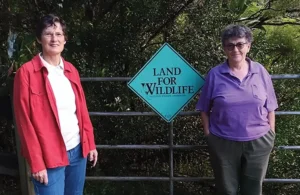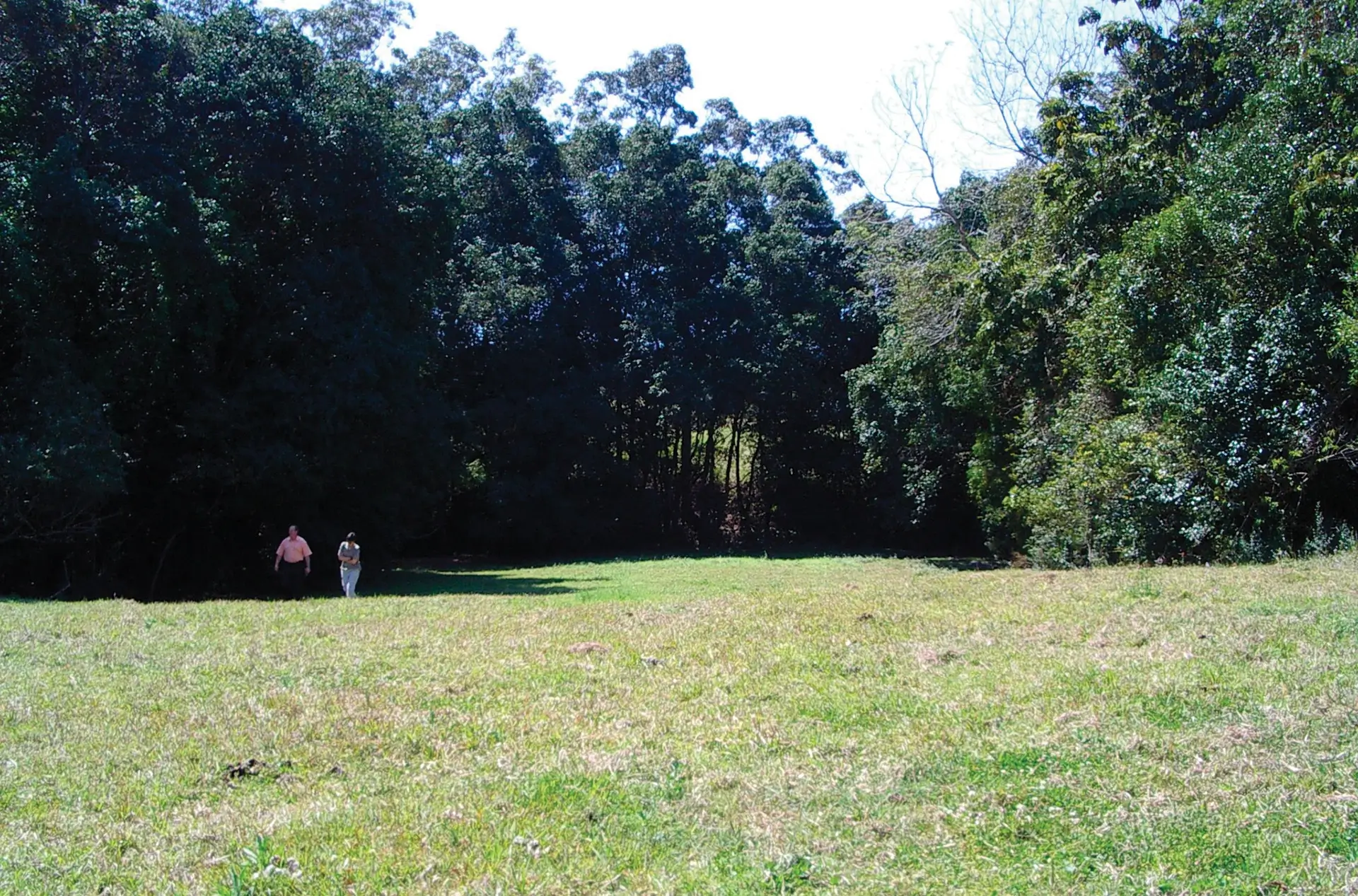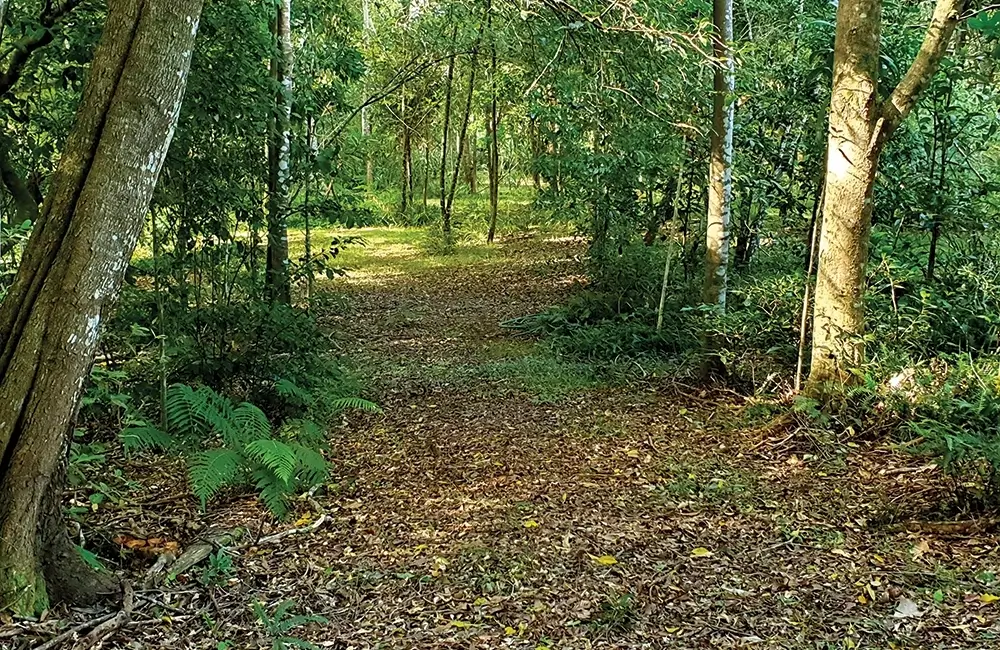Late in 2003 we purchased small acreage on Happy Jack Creek in the hills behind Cooroy. After “and so now what do we do”, we embraced stewardship and got to work in 2004, for eight years as weekenders from Brisbane.

Truthfully, we started out clueless and rudderless, blessed with a narrow strip of beautiful remnant rainforest along the creek edges, but lots of bare damaged paddock, lots of weeds and a run-down house. We set out to leave one little bit of the planet in better condition than we found it.
Twenty years, lots of research and many thousands of hours and plantings later, our block is transformed and largely reforested. As with all worthwhile journeys, there have been many trials and tribulations enroute; floods, hail, drought, frost and trespassing cattle. For me personally it has been a rewarding and spiritually life-fulfilling parallel journey of growing, healing and transcending the weeds of life.
Dave Burrows was the Noosa Land for Wildlife Officer who came to do our initial property assessment, and guess what, we didn’t technically qualify! We were under the official Land for Wildlife one hectare minimum size limit.
The main ecosystem on our property is classified as Regional Ecosystem 12.3.1, which essentially means riparian (watercourse) rainforest. It is a wonderfully rich biodiverse ecosystem and is listed as Endangered under Queensland legislation. This ecosystem is almost entirely found on private land and has been extensively cleared as it is also perfect dairy country.
Thankfully Dave wisely saw potential in both our rudderless enthusiasm and our degraded bit of paradise, and we were in with a grin! [Note to readers: Land for Wildlife Officers can use their discretion based on their ecological expertise and the condition of the property at the time of assessment as to whether a property is eligible to join the program].
There is a great factsheet about this ecosystem, and many other threatened ecosystems, on the Land for Wildlife website at www.lfwseq.org.au/ecosystem-factsheets/
Dave’s assessment included doing a plant species list. At that point I had identified White Cedar (Melia azedarach) and that was about it. So, in preparation for Dave’s visit, I cut old venetian blind slats into sections, punched holes and attached strings. We toured, Dave identified, and we name-tagged as we went, and I took pictures. A few months ago, I discovered a Dave autographed tag from deep in the mulch.
My photos also sadly reveal how incredibly unexpected and swift the process of species decline can be. Amongst the species Dave identified were Native Guava (Rhodomyrtus psidioides) and Scrub Turpentine (Rhodamnia rubescens) both then common, but now classified as Critically Endangered.
Around 2011 Myrtle Rust, a serious fungal disease, arrived in Australia and quickly spread, affecting plants within the myrtle (Myrtaceae) family. I was surprised to find just how many native species are members of the myrtle family including lilly-pillies and even eucalypts. The rust attacks new growth and flowering parts, and over-time, the species that are particularly susceptible to Myrtle Rust are unable to produce seeds. In parts of the nursery industry the disease was known as Guava Rust. It is bad news for our Native Guava, which appears to be nearly functionally extinct in the wild.
I have been successfully growing Native Guava from root suckers and they are fast growing and easy to cultivate. A project to locate more genetically rust-resistant specimens has a leaf from one of our plants in Canberra for DNA testing, so hopefully our local plants will have a future. I was also heartened by an article in the LfWSEQ February 2024 magazine about potentially rust-resistant Native Guava plants found on a Land for Wildlife property in Logan. Maybe there is hope for our Native Guavas yet.
Article and photos by Lesley Pantlin and Judy Bowey
Land for Wildlife members
Cooroy, Noosa


